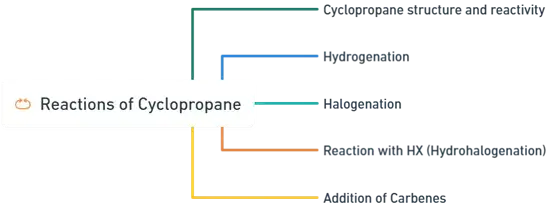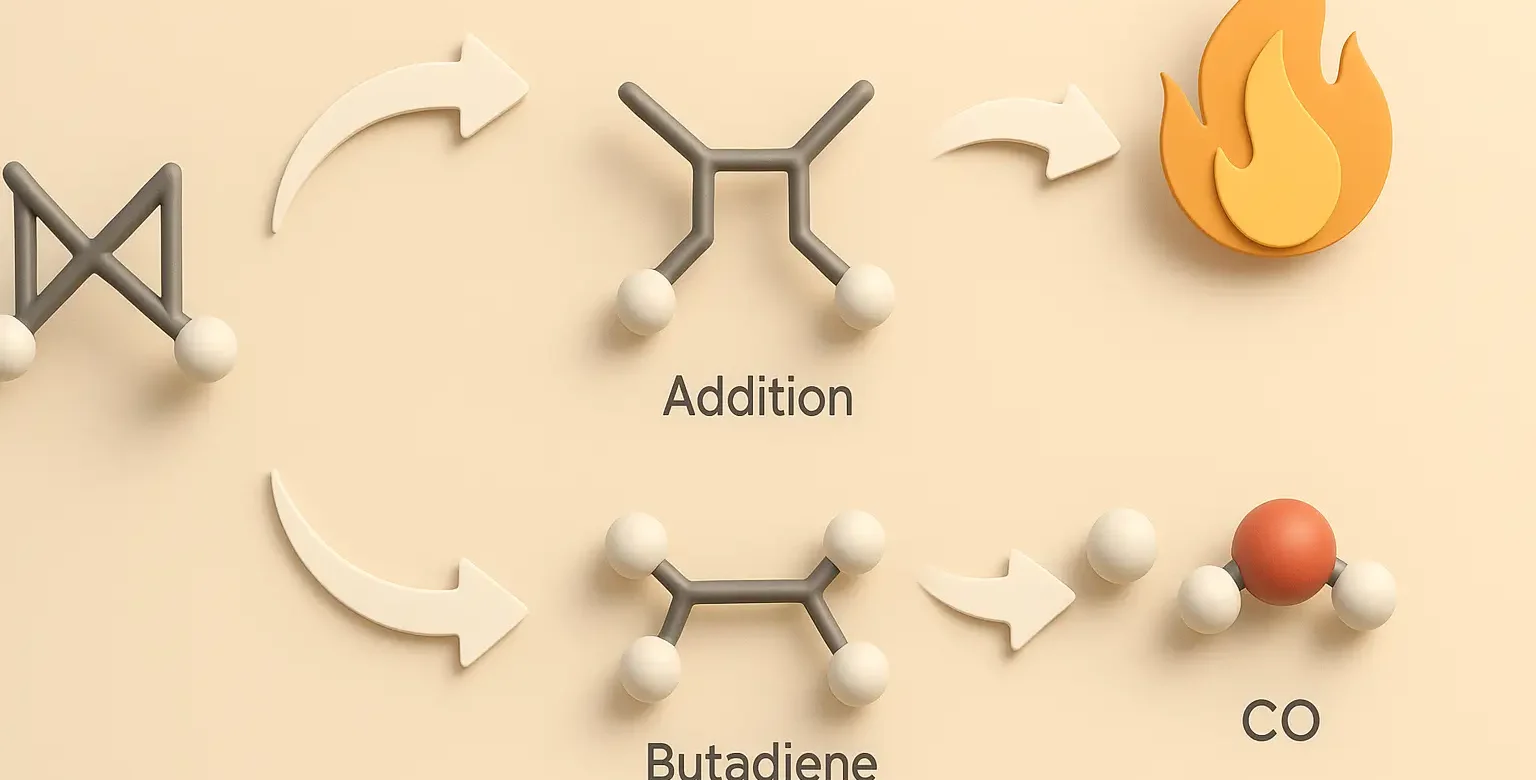- Cyclobutene is a four-membered ring with one double bond.
- The presence of the double bond makes it reactive in ways similar to other alkenes, but the ring strain also plays a significant role in its reactivity.

-
Hydrogenation of Reactions of Cyclobutene:
- Cyclobutene can be hydrogenated to form Cyclobutane. This reaction reduces the double bond, increasing the saturation of the ring.
-
Cyclobutene + H2 → Pd/C (reagents) → Cyclobutane
-
Diels-Alder Reaction of Reactions of Cyclobutene:
- As a dienophile, cyclobutene can participate in the Diels-Alder reaction with a diene to form bicyclic compounds, relieving the ring strain in the process.
-
Cyclobutene + Diene → Bicyclic compound
-
Electrophilic Addition:
- Cyclobutene reacts with halogens (e.g., Br₂) or hydrogen halides (e.g., HBr) across the double bond to form halogenated Cyclobutane.
-
Cyclobutene + X2 → 1,2-Dihalocyclobutane
-
Polymerization:
- Under certain conditions, cyclobutene can undergo polymerization to form polycyclobutene, a polymer with potential applications in electronics due to its high thermal stability.
-
nCyclobutene → Polycyclobutene
Thank you for reading from Firsthope's notes, don't forget to check YouTube videos!

